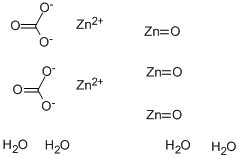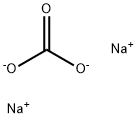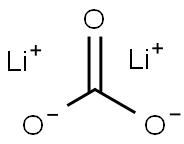Vinylene carbonate
Synonym(s):1,3-Dioxol-2-one;VC
- CAS NO.:872-36-6
- Empirical Formula: C3H2O3
- Molecular Weight: 86.05
- MDL number: MFCD00005380
- EINECS: 212-825-5
- SAFETY DATA SHEET (SDS)
- Update Date: 2025-09-25 17:15:13

What is Vinylene carbonate?
Chemical properties
clear colorless to light yellow liquid
The Uses of Vinylene carbonate
Vinylene carbonate is used as an additive to electrolyte solutions for anode side Lithiumion batteries. It also acts as a sealant to seal at least a portion of the silicon-polyvinyl acid interface. It is further used for great improvement of high temperature performance of the battery.
What are the applications of Application
Vinylene carbonate (VC) can be used as an electrolytic additive for ionic liquid electrolyte for the formation of lithium-ion batteries. It can also be used in the formation of hybrid solid electrolyte interphase (SEI) for the fabrication of lithium-based batteries.
Preparation
Vinylene carbonate is produced by the known method by eliminating hydrogen chloride from chloroethylene glycol carbonate by means of tertiary amines, in particular triethylamine. Chloroethylene glycol carbonate is obtained by free radical chlorination of ethylene glycol carbonate by means of chlorine or sulphuryl chloride. This synthesis was published for the first time in 1953 by Newman and Addor (JACS, 1953, page 1263; JACS 1955, page 3789).
General Description
This product has been enhanced for energy efficiency. Carbonate building block offered as a solution in ethyl acetate for more convenient handling. Vinylene carbonate may also be used as a dienophile in Diels-Alder reactions.
Flammability and Explosibility
Non flammable
Purification Methods
Purify it by zone melting, or distillation, and stabilize it with 0.5% of 2,6-di-tert-butyl-p-cresol. [Beilstein 19 III/IV 1597, 19/4 V 72.]
Properties of Vinylene carbonate
| Melting point: | 19-22 °C(lit.) |
| Boiling point: | 162 °C(lit.) |
| Density | 1.360 g/mL at 20 °C |
| vapor pressure | 3.35hPa at 25℃ |
| refractive index | n |
| Flash point: | 163 °F |
| storage temp. | 2-8°C |
| solubility | 11.5 g/100 mL |
| form | Liquid |
| color | Colorless to pale yellow |
| Specific Gravity | 1.355 |
| Water Solubility | 11.5 g/100 mL |
| Sensitive | Moisture Sensitive |
| BRN | 105683 |
| CAS DataBase Reference | 872-36-6(CAS DataBase Reference) |
| NIST Chemistry Reference | 1,3-Dioxol-2-one(872-36-6) |
| EPA Substance Registry System | 1,3-Dioxol-2-one (872-36-6) |
Safety information for Vinylene carbonate
| Signal word | Danger |
| Pictogram(s) |
 Corrosion Corrosives GHS05  Skull and Crossbones Acute Toxicity GHS06  Health Hazard GHS08  Environment GHS09 |
| GHS Hazard Statements |
H302:Acute toxicity,oral H311:Acute toxicity,dermal H315:Skin corrosion/irritation H317:Sensitisation, Skin H318:Serious eye damage/eye irritation H373:Specific target organ toxicity, repeated exposure H411:Hazardous to the aquatic environment, long-term hazard |
| Precautionary Statement Codes |
P273:Avoid release to the environment. P280:Wear protective gloves/protective clothing/eye protection/face protection. P314:Get medical advice/attention if you feel unwell. |
Computed Descriptors for Vinylene carbonate
| InChIKey | VAYTZRYEBVHVLE-UHFFFAOYSA-N |
New Products
4,4-Difluoropiperidine hydrochloride tert-butyl 9-methoxy-3-azaspiro[5.5]undecane-3-carboxylate Indole Methyl Resin N-Isopropylurea N,N-Dicyclohexylcarbodiimide(DCC) MELDRUMS ACID 5-METHYLISOXAZOLE-4-CARBOXYLIC ACID Magnessium Bis glycinate Zinc ascorbate 1-bromo-2-butyne 2-acetamidophenol 9(10H)-anthracenone Erythrosin B, 4-Piperidinopiperidine 2-((4-morpholinophenylamino) (methylthio) methylene) malononitrile 2,4-dihydroxybenzaldehyde 3-(4-morpholinophenylamino)-5-amino-1H-pyrazole-4-carbonitrile Methyl 2-methylquinoline-6-carboxylate 2,6-dichloro-4-nitropyridine 4-Bromo-2-chlorobenzonitrile 2-(benzylamino)acetic acid hydrochloride 4-(tert-Butoxycarbonylamino)but- 2-ynoic acid 3,4-dihydro-2H-benzo[b][1,4]dioxepine 1-Phenyl-1-cycloprppanecarboxylicacidRelated products of tetrahydrofuran








You may like
-
 Vinylene carbonate, Stabilized with BHT CAS 872-36-6View Details
Vinylene carbonate, Stabilized with BHT CAS 872-36-6View Details
872-36-6 -
 Vinylene carbonate, Stabilized with BHT CAS 872-36-6View Details
Vinylene carbonate, Stabilized with BHT CAS 872-36-6View Details
872-36-6 -
 Vinylene carbonate, Stabilized with BHT CAS 872-36-6View Details
Vinylene carbonate, Stabilized with BHT CAS 872-36-6View Details
872-36-6 -
 Vinylene carbonate CAS 872-36-6View Details
Vinylene carbonate CAS 872-36-6View Details
872-36-6 -
 Vinylene Carbonate (stabilized with BHT) CAS 872-36-6View Details
Vinylene Carbonate (stabilized with BHT) CAS 872-36-6View Details
872-36-6 -
 Vinylene carbonate CAS 872-36-6View Details
Vinylene carbonate CAS 872-36-6View Details
872-36-6 -
 Vinylene carbonate solution CAS 872-36-6View Details
Vinylene carbonate solution CAS 872-36-6View Details
872-36-6 -
 20677-73-0 (2,2-diethoxyethyl)methylamine 98%View Details
20677-73-0 (2,2-diethoxyethyl)methylamine 98%View Details
20677-73-0
